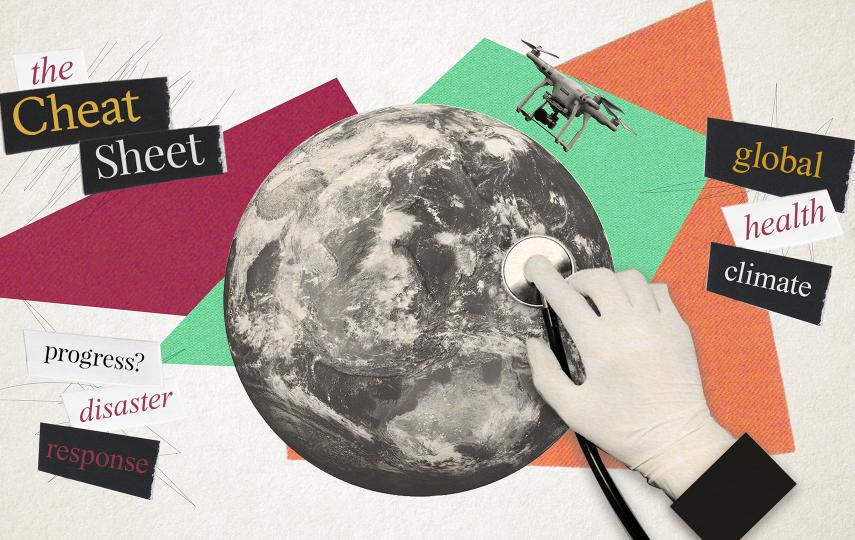After leaving the DRC, Bamanyisa ended up in south-western Uganda where she has been living as a refugee. She was separated from her parents as they fled Bunia, and Banyamisa, her elder brother, a younger sister and a niece, arrived in the Kyaka II refugee camp where they lived together as a family until 2008 when her brother disappeared.
“I don’t know where he went; I have reported his disappearance but I have not so far heard anything; right now I am taking care of my sister, my niece and an orphan who I decided to take in as she did not have anyone to help her,” Banyamisa, now aged 20, told IRIN on 7 March.
With the help of the UN Refugee Agency (UNHCR), Banyamisa managed to continue with her schooling while in Uganda, dropping out in the third year of secondary school.
"I was idle for about two years with nothing to do here in Kyaka,” she said. “Fortunately, I got employed in June 2009 by Makapad where I am now the quality controller,” Banyamisa said. “I get a monthly salary of 80,000 shillings [US$40] which I use to sustain my family; where would I have gotten such money without Makapads?”
Set up in 2008 by a Makerere University professor, UNHCR and its implementing partner GTZ, the Makapads project has not only transformed the livelihoods of its employees, it has also made available sanitary pads for tens of thousands of refugees – most of them Congolese – living in settlements in south-western Uganda.
Moses Kizza Musaazi, a senior lecturer at Makerere University, initiated the project to help disadvantaged girls access affordable sanitary pads. The project later received support from UNHCR and GTZ, leading to the establishment of two sites in Kyaka II refugee settlement where the pads are produced, purchased by UNHCR and distributed among refugees.
The Makapads are also produced in the capital, Kampala, at the faculty of technology at Makerere University.
|
Photo: Jane Some/IRIN  |
| The UN refugee agency, UNHCR, buys the pads for distribution among female refugees living in settlements in southwestern Uganda. They are also available for sale at local outlets |
"The project has also attracted the interest of nationals living close to the refugee settlement. They want to be involved as they realize it is beneficial but right now we only have refugees working here,” Ibrahim Rumanyika, the project manager for the Makapads project in Kyaka II said.
Rumanyika is a Congolese refugee who arrived in Uganda six years ago.
Production process
The production process begins with the collection and delivery of papyrus reeds, Rumanyika said. “Once we have the papyrus, it is peeled, cut up into small pieces and ground into a powdery form,” he said. “Then we sieve it to remove the coarse particles. This is then taken to another container filled with water, where it is mixed with waste paper pulp; we get the paper from UNHCR in Kampala.
“From there, we place the mixture on drying racks; it takes a few hours to dry when the weather is OK, on rainy days we hardly dry anything,” Rumanyika said. “Thereafter we take the dried sheet into the production room where it is softened and smoothed, and cut into pad-sizes; then combined with a paper-only dried pulp [which is softer], packed in soft outer material, sealed and sterilized.”
With just two buildings and 50 drying racks lined up outside, the project runs on solar-powered electricity. “Even sterilization becomes a problem because we depend on solar power to do it; sometimes we do not produce as much as the day’s capacity because of this,” he added.
On average, the site makes at least 3,000 packages a day – each with 10 sanitary pads.
“UNHCR buys the pads from us for distribution among the refugees here in Kyaka and Nakivale settlements but we also make pads for sale in local retail outlets,” Rumanyika said.
|
Photo: Jane Some/IRIN  |
| The crushed pulp from papyrus reeds is mixed with waste paper before being sun-dried on racks outside the Makapads plant at Kyaka II refugee settlement |
He said a Makapad package retails at 1,000 Uganda shillings [US$0.50) whereas the prices for the other varieties on the market start at 2,000 shillings [$1].
Banyamisa said her life and that of other refugees using the pads has changed for the better. “Previously, many of us used cloth or toilet paper; the problem with the cloth was that one may not have soap with which to wash it, sometimes water is hard to come by, so you could end up with a bad smell as a result,” she said.
“Since the Makapads were introduced, the days of periods being depressing are gone; the only problem right now is the pads are too thin for those with heavy flows. I think we should make some pads specifically for such women.”
Expansion plans
According to UNHCR, the Kyaka II Makapads project has the potential to become self-sustaining. At the moment, the agency supplies it with the waste paper which is mixed with the papyrus to make the pads.
Needa Jehu-Hoyah, associate external relations officer for UNHCR Uganda, said: "The Makapads project is one of the most beautiful examples of refugees coming together to respond to the needs of women and children in a manner that sustains their dignity. We recently reached the 50 percent mark in the procurement of Makapads for female refugees of reproductive age in the refugee settlements.”
Maria Mangeni, UNHCR's Makapads expert, said due to increased interest in the project, UNHCR was considering plans to replicate the project in other refugee settlements in the country.
js/mw
This article was produced by IRIN News while it was part of the United Nations Office for the Coordination of Humanitarian Affairs. Please send queries on copyright or liability to the UN. For more information: https://shop.un.org/rights-permissions





